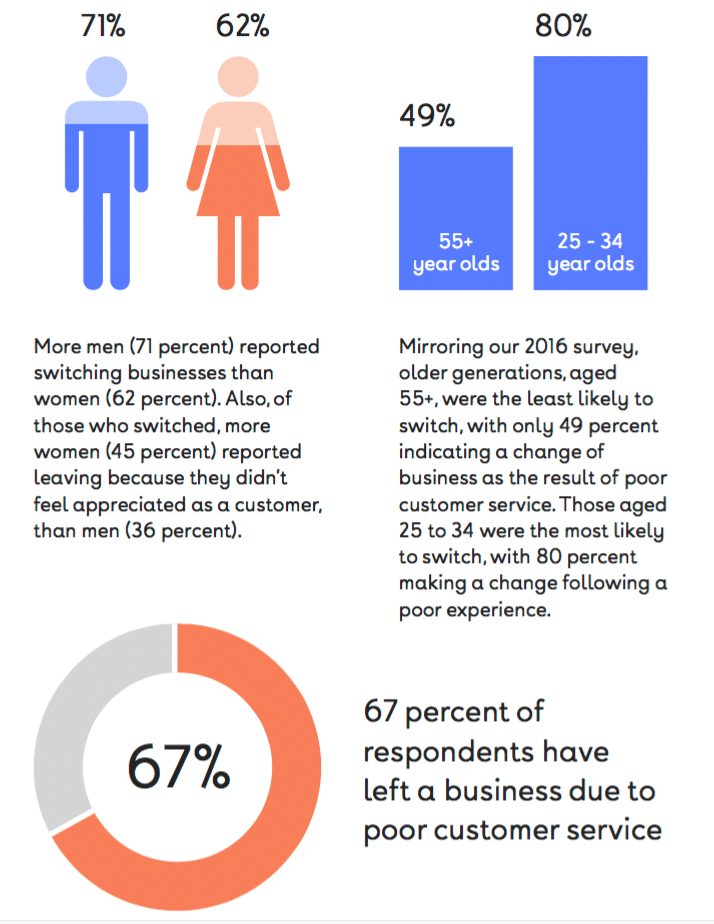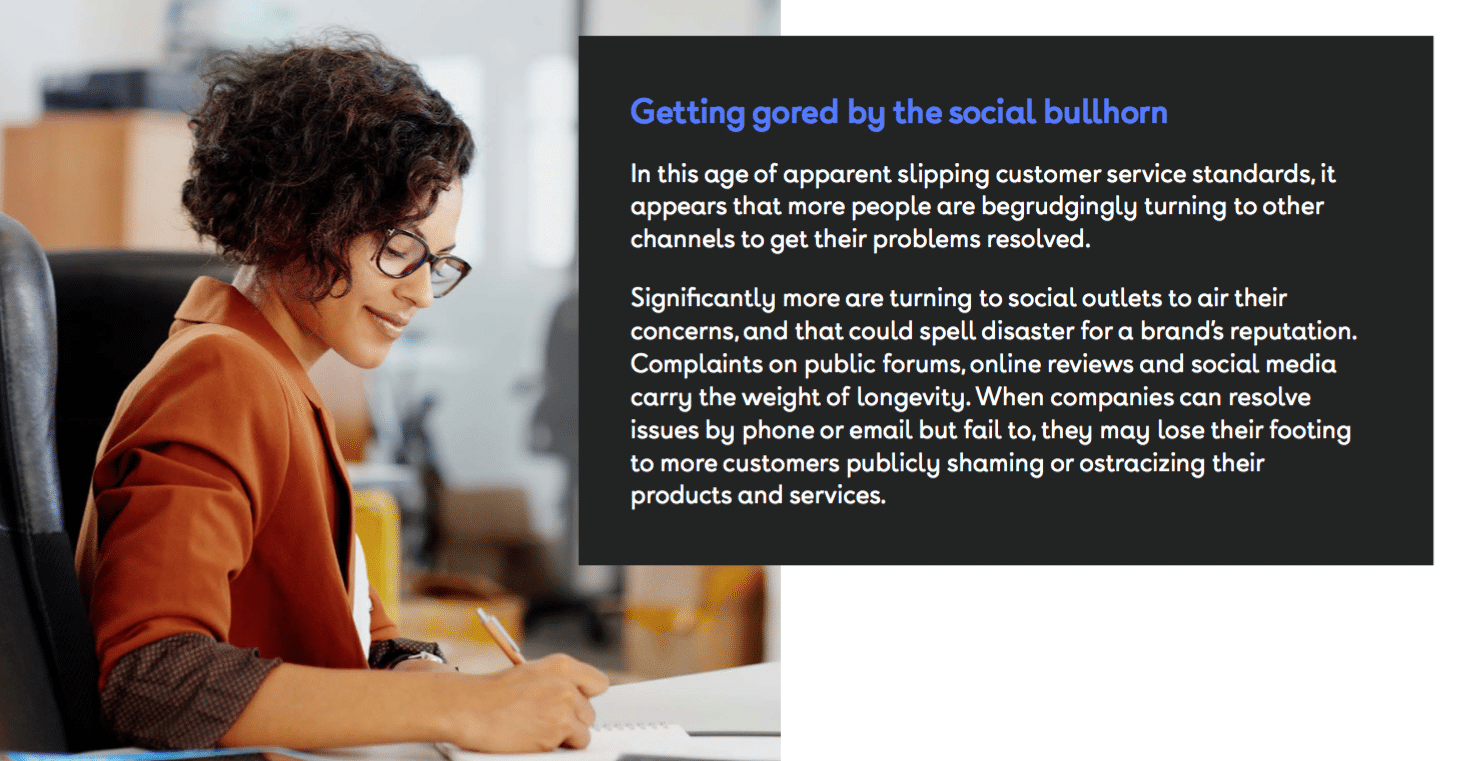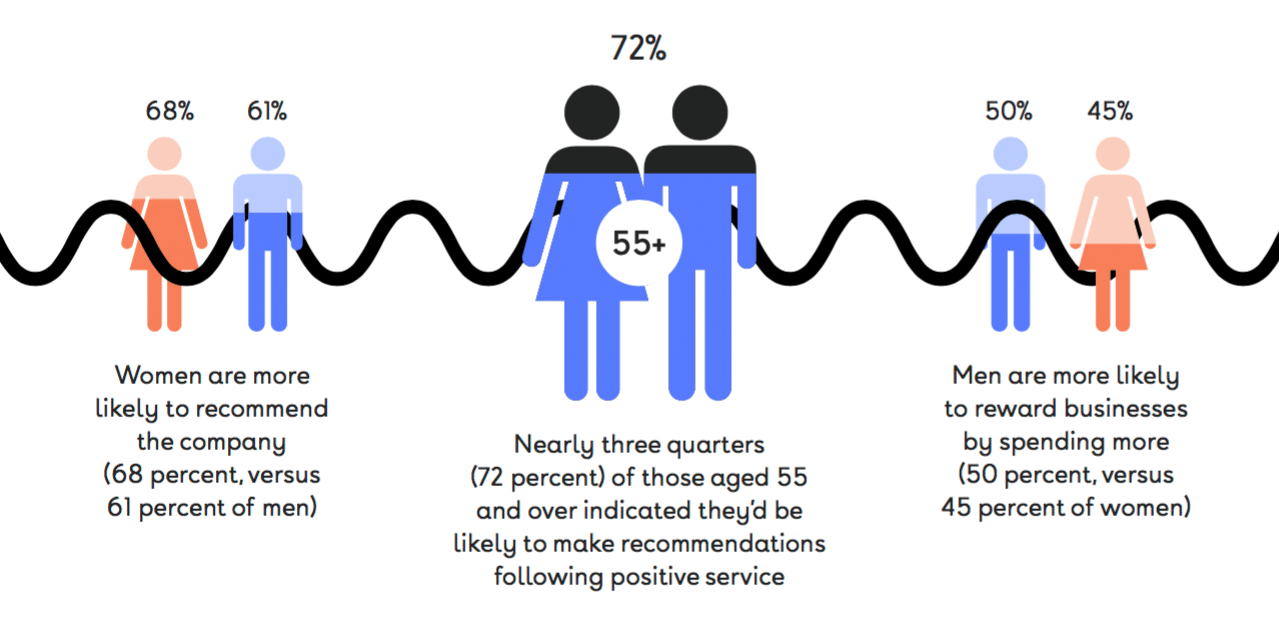When it comes to brands, the U.S. has progressed as a nation of “serial switchers”—consumers quick to abandon one company for another—and the number is growing constantly. In fact, new research from sales tech firm NewVoiceMedia (NVM) reveals that U.S. companies are losing $75 billion a year due to poor customer experiences, a $13 billion increase from 2016.
According to the firm’s new study, the number of respondents leaving a business due to inadequate customer experiences increasing by 37 percent since NVM’s 2016 study.
The survey found that top reasons for leaving included:
- Feeling unappreciated (40 percent)
- Not being able to speak to a person (33 percent)
- Being passed around to multiple agents (30 percent), and
- Being put on hold for too long (28 percent)
Seventeen percent had such low expectations of the customer experience that they didn’t even bother contacting support about their service issue before switching companies.
An overwhelming majority (86 percent) of respondents said that if they felt they’d made a positive emotional connection with a customer service agent, they’d be more likely to do business with that company again. However, on average, consumers felt emotional connections with just 30 percent of companies they’d done business with over the last year.
Calling out the contact centers
Nearly half of respondents (48 percent) indicated calling as their preferred method of communication with a business, and 56 percent considered calls to be the quickest way of resolving an issue. However, consumers flagged having to repeat information to multiple agents as the top reason (43 percent) they dislike calling companies.
Consequently, only 27 percent suggested calls were the most effective way of resolving an issue. Social media (21 percent) and email (11 percent) were other channels touted as “effective” in settling customer service issues.
How customers respond
Faced with poor customer service, 39 percent would never use the offending company again, 37 percent would change suppliers, 36 percent would write a complaint email/letter, 28 percent would post an online review and 26 percent would complain publicly via social media. Only 7 percent would take no action.
On the contrary, if provided with good service, respondents would be more loyal (66 percent), recommend the company to others (65 percent), spend more money (48 percent) and use the business more frequently (39 percent).
In an era of empowered and ultra-connected consumers, being able to contact a company through any channel was rated as the top driver of feeling emotionally connected to a brand (43 percent). This supports research from the Aberdeen Group, which found that companies that excel in engaging customers across channels can retain nearly three times as much business as those without an omnichannel strategy.
“With revenue being transferred between companies at an alarming rate, this research shows how those that compete on the basis of customer delight can drive the acquisition, retention and efficiency that make leading businesses successful,” said Dennis Fois, CEO of NewVoiceMedia, in a news release.
“In today’s Age of the Customer, personal, emotive customer interactions play a critical role in bridging the gap for what disruption and digital innovation alone cannot solve. For brands to compete—and win—in CX in 2018 and beyond, service leaders must ensure their teams optimize processes and communication in ways that create positive emotional experiences for customers,” Fois added.
“Emotive customer experience recognizes that our decisions are driven by deep seated motivations—the things that really matter to us in terms of identity and personal fulfilment,” said Martin Hill-Wilson, customer engagement strategist and founder of Brainfood, in the release. “Tap into these, and customers become more valuable in every respect: from advocacy to lifetime spend.”
Download the full report here.
The survey was undertaken by independent research company Opinion Matters from Jan. 31 to Feb. 6, 2018, with a sample size of 2,002 adults from the United States







